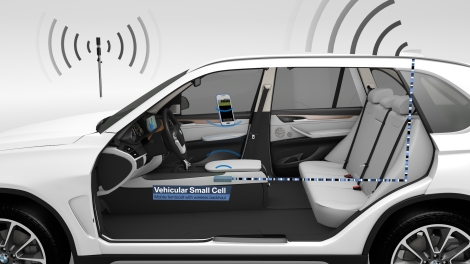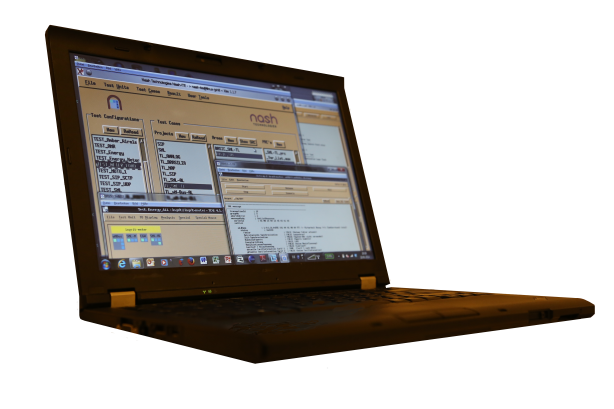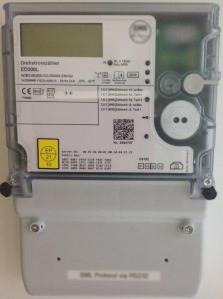If we’re coming to the Mobile World Congress this year thinking we’ve got all the answers – or at least some of them – then maybe I need to disappoint us. What we really need are questions. Lots of them. Why?
It is because we are living in the age of disruptions. It is not that they occur every once in a while. They characterize this era. There frequency even increases. They shake everything and everyone, one after the other. There seems to be no end. Many answers belong already to the past, before they have enjoyed a life in the present. Our museums are full of brilliant answers, the dreams and aspirations of even older generations of engineers. But what prevails in this shakeout?
The unshakable. I.e. the resilient, the flexible, the ones anticipating the next move. The ones that have implemented ambitious dreams into their designs, at a time when the majority was laughing at them. The ones having more questions than answers. There are times when questions are more important than answers. Yes, these are our days. Whereas answers sooner or later find their “eternal home” in the museum, questions always have their future in front of them. And, it must be the right questions. It is like George Bernard Shaw once said: “You look at the world and ask ‘Why?’. I dream and ask ‘Why not?’”.
So let’s have a look at the disruptions that our industry created in the past 100 years, say, and see what we could learn for what is ahead of us. When Wireline Telephony was invented and introduced, the delivery boys became obsolete. The required basic technology was circuit interconnectivity. Visionaries like Heinrich von Stephan, who built world’s most advanced telephone system in Germany were laughed at and found themselves in the “Book of Idiots”, which later became the public telephone book. What was the true nature of this disruption and why was its impact so profound? This question is difficult to answer and would fill at least another blog post. So we keep this question to help us guide into the future.
Mobile Telephony extended Wireline Telephony, requiring mobile circuit connectivity. No one further became obsolete this time. Things changed, when Data Communication appeared. Packet communication had quite a few advantages over circuit connectivity. However, the opposite of this statement has also some relevance: for instance the Carrier Grade versions of Ethernet emulate some of the circuit connectivity features. Packet communication gave us the Internet. And the Internet gave us an abundance of information. We suddenly had abundance to such an extent that it required search to be useful. Search was free, of course, and refinanced via advertising. This abundance of information and the corresponding shift in advertising started to make printed products obsolete. What was the true nature of these disruptions and why was their impact so profound?
Then Voice over IP (VoIP) arrived with improved packet communication. Skype and Co. were just cheaper and offered attractive new services in combination with voice. Circuit Wireline Telephony became obsolete. Did voice communication become obsolete? No! International voice traffic has a constant annual growth of 13%, thus compensating price declines at the same rate. This is a stable trend for decades. And it is still true up until 2012, being 490 Billion minutes. However, since 2011 this growth came significantly from OTT voice solutions combined with smart messaging services, increasing the pressure on carrier voice solutions. What was the true nature of this disruption and why was its impact so profound?
In the early 2000’s, Social Communication entered the arena. It required Cloud Computing as the enabling and driving technology. Traditional communication services and techniques became much less important. What was the true nature of this disruption and why was its impact so profound?
The iPhone brought us the breakthrough in Mobile Data Communication. It required even more advanced packet technology. App stores were established, an app economy appeared, and exploded. More traditional communication services became much less relevant. In 2007, UMTS packet data was exploding over UMTS voice. And in 2009, the volume of total mobile packet data was greater than all mobile voice. In February 18, 2013, Booz & Co. predicts a decrease of mobile voice turnover of 5% per year until 2016 to then $ 628 Billion, while the one of data will grow by 9% per year. The annual data volume even grows by 29%. This growth is generated by mobile digitalization, and the bulk of this growth goes to the OTTs. Infonetics reported recently, that the Carrier VoIP/IMS market sees first positive year since 2008. LTE network operators use IMS to implement their voice solutions. But will this ever pay off, as mobile voice has a sustained decline of revenue? And what about Small Cells? They hit the application layer and implement a mobile PABX. Ubiquisys and Quortus demonstrate a small cell based mobile PABX for small and mid-sized enterprises (SMEs). This solution eliminates the need for desk phones, hence making our lives easier. What IS the true nature of these disruptions and why IS their impact so profound?
The marginalization of voice traffic was predicted from the late 1990’s onwards. This seemed to be obvious and inevitable, but the reality was still different. Voice remained a cash cow. Corrective action did not seem to be necessary. But what happened since then? The Telecommunications Operators lost the Application Layer. For 100 years, the Application Layer consisted of voice, fax, telex and the like. Then suddenly the Application Layer became extremely rich and abundant. This abundance was driven by completely new players. Abundance is game-changing. It is so desirable and attractive to the user, that it cannot be hold back. Plus: the disruption of the traditional telephone system by the Internet was also about philosophies “regulated networks” versus a “multistakeholder model”, and of institutions ITU vs. IETF.
Is there a remedy for the Incumbent Telecommunications Service Providers? Will they have a new approach, or just more of the same old same old? Can they reinvent themselves? What will be their new message? Is this message strong enough to drive their change? I really wish there would be one. But honestly, I don’t believe that it is QoS (Quality of Service). It is not the quality of the service that matters; it is the service itself, the application. QoS can only be a stop-gap-solution. The marketing position and the immediate user visibility of the real service is always much better than the just the one of its quality.
And what do we see now at the Mobile Horizon? The nature of a horizon is that it is far away and things cannot be discerned clearly. They seem to be so small. And there appears to be so much time until they arrive here. But what we can already recognize is indeed clear enough. It could be subsumed in the formula M2M & IoT, Machine-to-Machine Communication realizing the Internet of Things. Everything connected, if you like, a new Human-Machine-Society. Do you feel the paradigm shift, again? Our life and work will change, and so will the value chains. Every Next Big Thing starts small. What WILL BE the true nature of these disruptions and why WILL their impact BE so profound? The answers will come. Who will carry them? And, whom will these answers carry? What will constitute the new teams? It is already clear: a new abundance is on the way. Again, it will be game-changing. Again, it cannot be stopped, because it is so desirable.
Business models are currently figured out. This trend is backed up by former Juniper M2M strategist Godfrey Chua joining Infonetics Research. A new nano-scale Chip Design enables the Future ‚Internet of Things‘. This prototype uses solar power and consumes so little energy that its battery does not need to be replaced. Thin and flexible credit-card-size tags can now be developed, which can be attached to common object like books, clothes, furniture, etc., thus connecting those objects to the Internet of Things. M2M protocols such as the MQTT (Message Queue Telemetry Transport) support short intermittent messages which are ideal for IoT applications: connection-less, and sleep & wake communication schemes save battery. This list could easily be extended. Emerging new technologies will transform vertical markets, and they will be mobile: health, transport (cars, trains, ships, planes, space vehicles), energy, learning, payment, homes, cities, etc.
What WILL BE the true nature of these disruptions and why WILL their impact BE so profound? Why not … ?
See you in Barcelona. Hall 5 G40.
Autor: Bernd Stahl





